| |
McLeod Plantation: Unvarnished truth shines through at this Charleston historic site
By Tom Adkinson
June 21, 2024
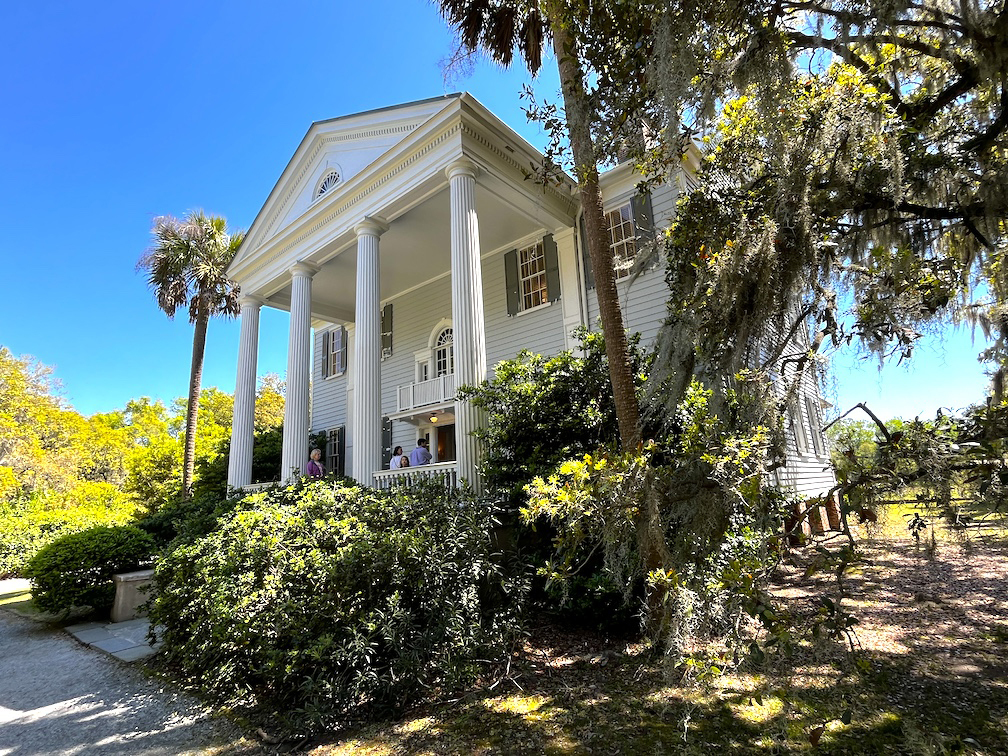
This view of the house at McLeod Plantation didn’t exist until well after the Civil War. Heirs of the family patriarch had their vision of a plantation mansion. Image by Tom Adkinson
|
|
CHARLESTON, S.C. – “Let’s face facts: The word ‘plantation’ is a euphemism for privately owned slave labor camps,” said Paul Garbarini, my guide at the McLeod Plantation Historic Site, just a few miles from downtown Charleston where the opening cannon barrages of the Civil War erupted.
His slap-in-the-face observation came as the tour group stood in the shade of stately oak trees lining an entrance drive that led to an attractive two-story white mansion. Four columns accented its front porch.
What followed was a multi-stop stroll around that mansion and through part of the 39-acre remnant of the McLeod Plantation. Before the Civil War, this was a diverse and successful farming and trading business. The tour’s focus was on the skilled and unskilled labor that made the operation successful rather than on the family whose name was on the deed.
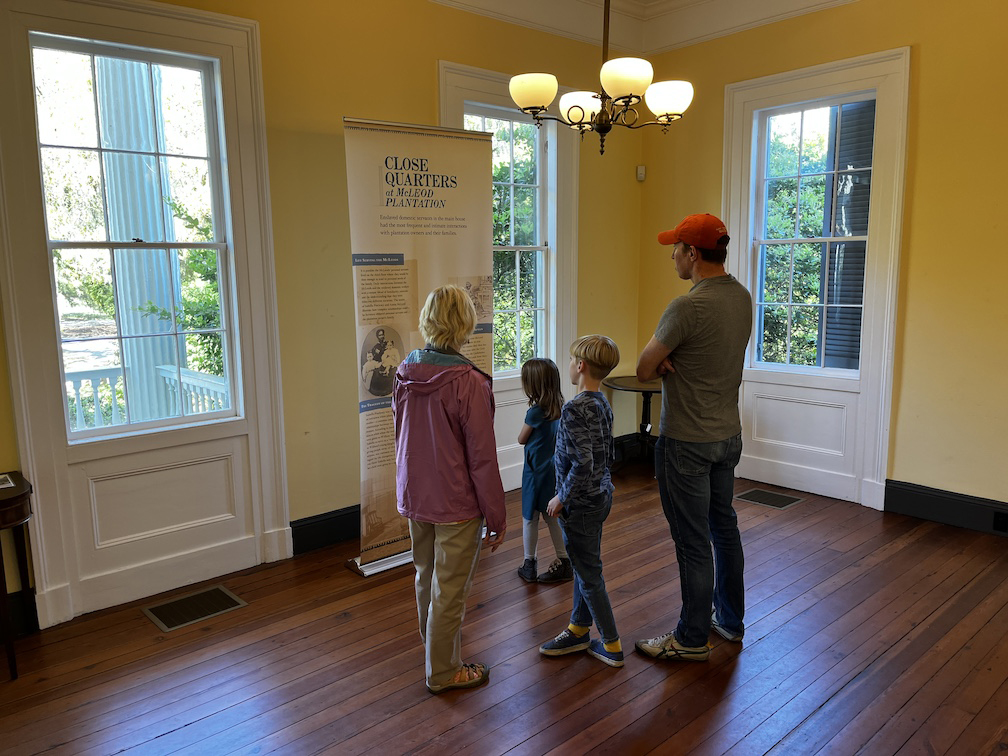
A family studies a history exhibit in a high-ceilinged room in the McLeod Plantation house, a structure enslaved artisans built. Image by Tom Adkinson
|
“This is the hard part of U.S. history,” Garbarini said, explaining how William McLeod had spent $11,500 in 1851 for 1,700 acres that he eventually developed with the labor of 74 enslaved Africans. They built his house, tended his crops, cared for his livestock and enlarged his net worth.
The McLeod Plantation is on James Island, and sea island cotton – the best there is – was its primary product. McLeod’s land produced more sea island cotton than any plantation on the island, even though there were five larger spreads. His fields also yielded tons of sweet potatoes, corn and peas.
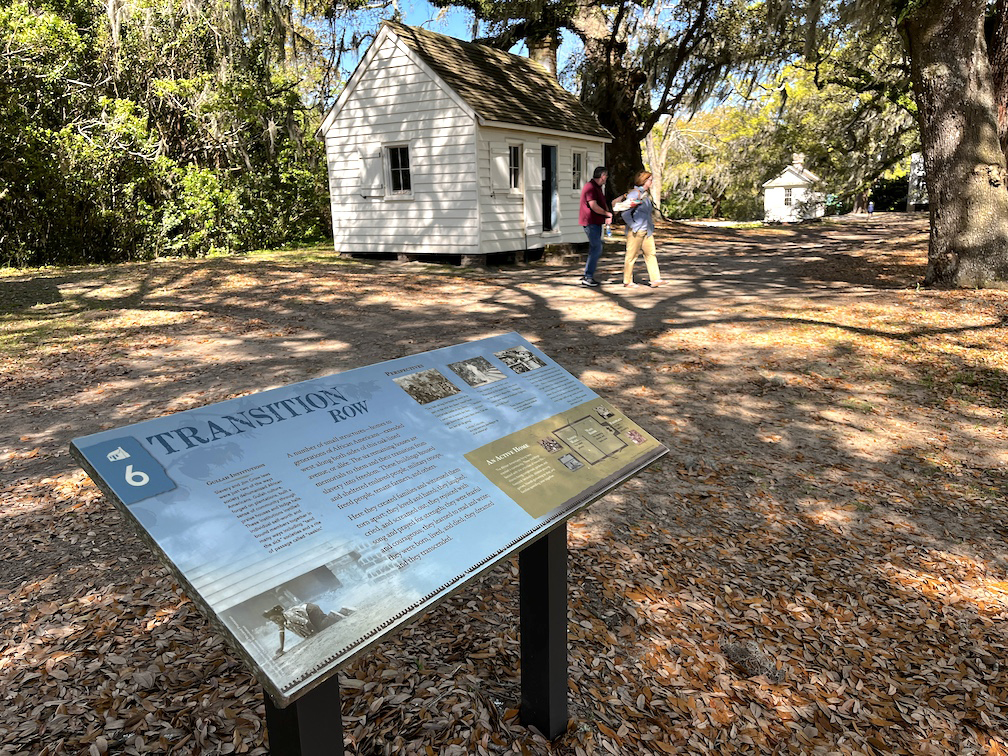
Only six of more than 20 dwellings that the enslaved occupied exist today. They are only a few yards from the plantation’s mansion. Image by Tom Adkinson
|
|
While recounting the productivity of McLeod’s land, Garbarini said McLeod was not among the ultra-wealthy.
“He aspired to wealth, but he was at best middle class,” he said, noting that McLeod’s house and land didn’t look as they do today.
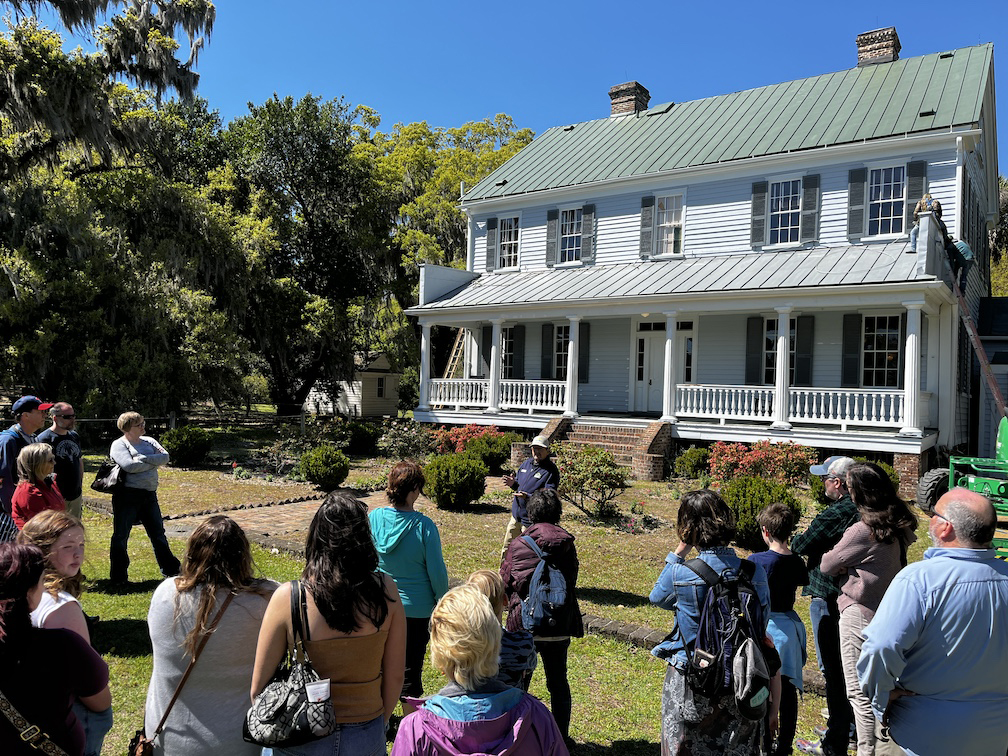
This is the historic front side of the McLeod home that William McLeod had built in the 1850s. Image by Tom Adkinson
|
“Today’s view is not what William McLeod had. The columns were added in the 1920s – to the back of the house. The live oaks were post-war additions, too. This is what his heirs wanted it to look like,” Garbarini said.
McLeod enlisted as a private in a Confederate cavalry unit, and while he was gone, the Confederate army occupied his home for three years. When the Union army took this portion of South Carolina late in the war, the house’s new occupiers were men of the 55th Massachusetts Infantry Regiment, some of the 200,000 members of the U.S. Colored Troops who joined the Union army after the Emancipation Proclamation.
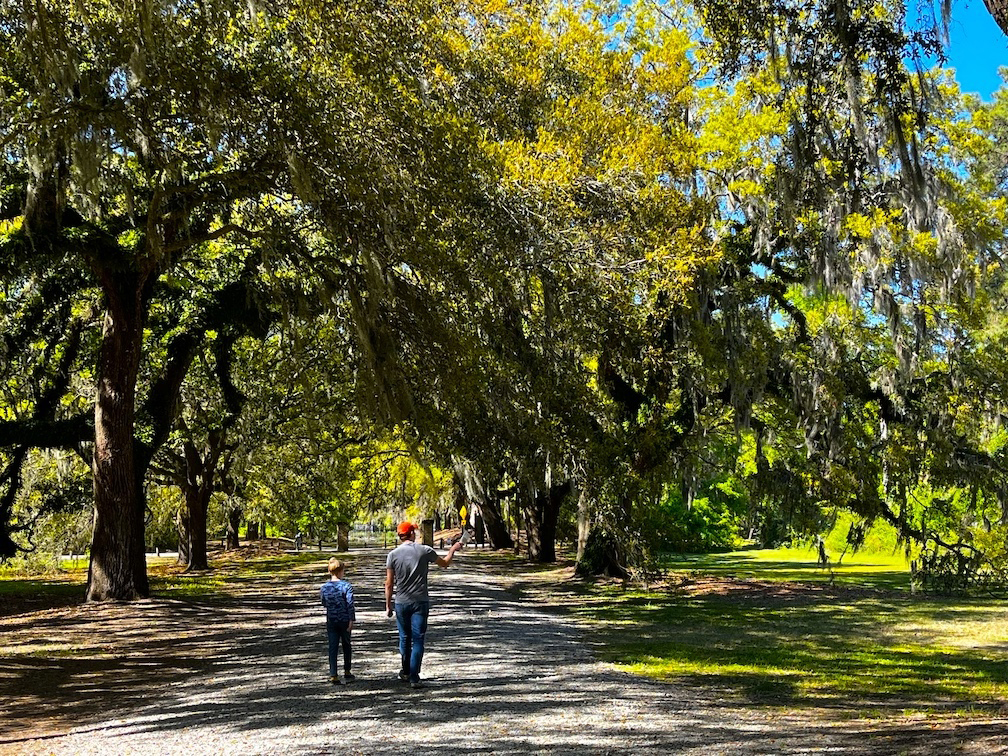
This drive, lined with stately live oaks, didn’t exist when the McLeod Plantation was in operation. The trees were planted by the original owner’s heirs. Image by Tom Adkinson
|
McLeod died while returning to James Island after the war, and the Freedmen’s Bureau used the house as a field office. An exhibit in the house notes that while the Freedmen’s Bureau’s role was to help emancipated slaves who had received small parcels of land, it often encouraged them to give up their land and sign labor contracts with their former enslavers. One of history’s cruel ironies is that smallpox swept James Island in the winter of 1865-1866, killing almost half of the 4,000 recently freed people.
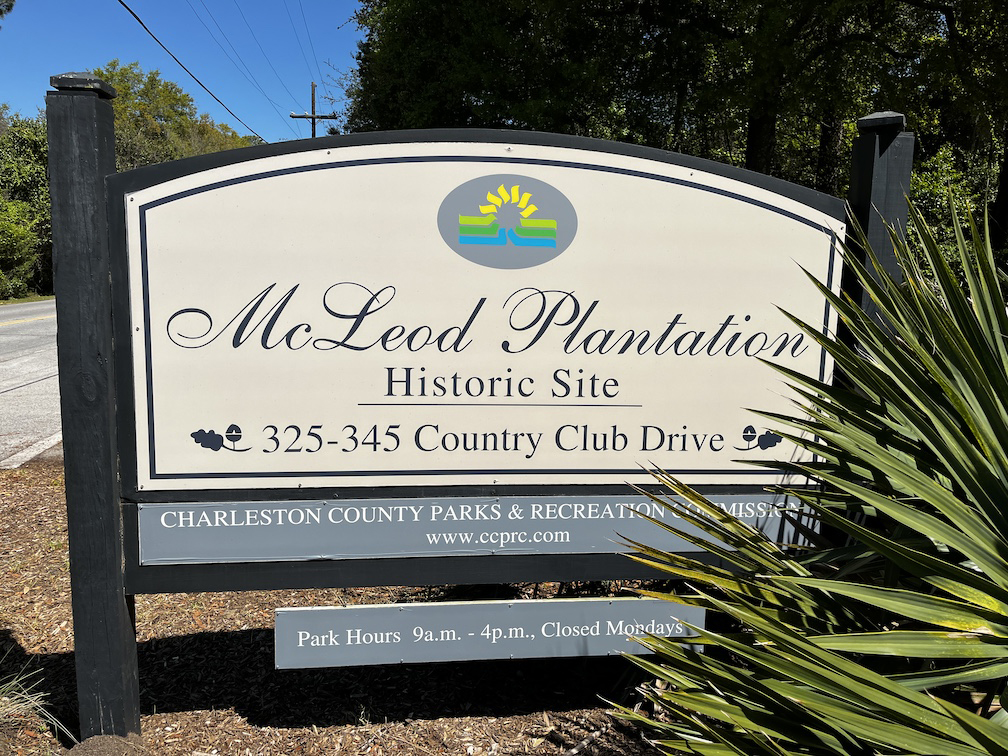
The sign for the McLeod Plantation Historic Site stands out in an area now part of the suburbs of Charleston. Image by Tom Adkinson
|
|
By 1870, heirs of William McLeod controlled the plantation’s acres again. The last heir died in 1990, and the estate went first to the Historic Charleston Foundation and eventually to the Charleston County Park and Recreation Commission as Charleston’s suburbs crept ever closer.
It is open today as a county park and history lesson, where, as Garbarini says, “We talk about the majority of the people who lived here.”
Trip-planning resources: ExploreCharleston.com, McLeodPlantation
|



